🌟🌟 AFRICAN LEGACY: THE AMAZINGLY RICH CULTURE OF THE BENIN KINGDOM 🌟🌟
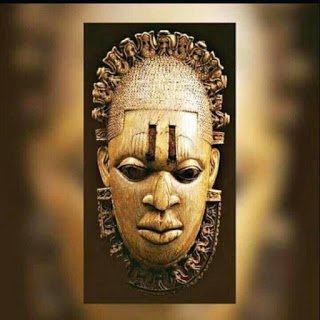
Oh Yes!!! The Benin culture has a great and rich culture. Its known to be one of the most influential culture in Africa. So in this post am gonna walk you through what you need to know about the Benin people and their heritage. Sit back and enjoy the ride.
The ancient Bini Kingdom dates back to 900 AD. Historical evidence lends credence to the fact that the Oba of Benin used to send his sons to different parts of the then Bini Kingdom as vassals to establish and consolidate his imperial authority in these areas. This explains the cultural similarities of these people with the coreBini ethnic stock. The history of the great Benin Empire as a nation is the record of a state that was established 2300yrs before any contact was made with European inferior nation. The great Benin Empire made remarkable achievements in those pre-European years, in art, science, administration, technology, political organization, architectures, astronomy, town-planning e.t.c.
When the great Benin empire reached the zeniths of its power, it extended its boundaries and exercised power over all the west African lands bordering the entire stretch of the bight of Benin, from the mouth of the river Volta in the west and eastward to the present day Congo and to the delta of river Niger in the east e.g. Ghana, Republic of Benin, both across the borders of modern Nigeria. Onitsha on the Niger and many other cities such as Asaba, Agbor, Isele-Uku, Warri, Idah e.t.c. Many of these states and other cities owe their corporate existence to the ancient Benin Empire. The influence of the great Benin Empire was said to have even extended to the present day Sierra Leone in the west.
The legendary fame of the Great Benin empire was such that the name Benin had many meanings, e.g. there was Benin-city and Benin empire, Benin river close to the new Benin (Warri) and there is the bight of Benin and the Benin district comprising of Sapele and Warri. Beyond the Gulf of Benin, the great Benin Empire’s legendary fame was indeed wide spread. Several European states heard about the empires might and civilized attitudes, many sought for it.
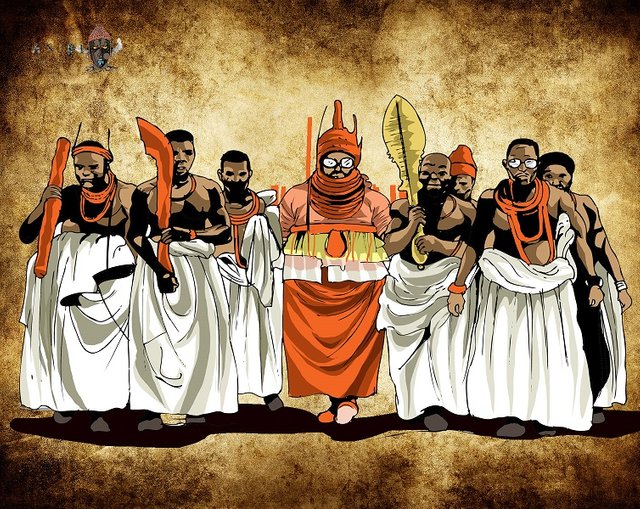
That a vast stretch of the West African coastline bears the name ” BIGHT OF BENIN” is no accident of history. Even until these day, it quite evident and amazing how the cultural influence of the ancient Benin empire remains strong till today. An independent republic of former Dahomey in 1975 decided to change its name to the republic of Benin as a way of reconnecting its roots to Africa’s once glorious kingdom.
The republic of Togo on the other hand named some of her prestigious institutions after the great Benin empire e.g. Universite du Benin, Togo hotel du Benin e.t.c. President Gnassingbe Eyadema during his 1974 visit to Benin City openly stated that the Togolese people originated from the ancient Benin Empire. His open declaration was cardinal in the sense that it ended the historical dilemma that clouded the ancient Benin and present day Benin speaking Yoruba influence on many West African nations. The Political & Spiritual Purpose of the Holy Land nations.
Today, the people of Onitsha across the Niger, the Isekiris, Urobos, Isian and Ijaws just to mention but a few all proudly trace their venerated royal lineages to the ancient Benin empire. Lourenco Pinto, who captained a Portuguese ship that brought the so-called missionaries to Warri the ancient port of Benin in 1619, sent the below deposition to the Sacra Congregazione the instance of father Montelcone. ” All the city of this African Empire are organized, large and harmonious. The streets run straight and as far as the eyes can see. The houses are large; especially those of the king, which is richly decorated and has, fine columns. The city is wealthy and industrious.”
Before that period, the great Benin Empire had built a unique defensive wall around its principal cities. The magnitude and complexity of this great wall has qualified it to be entered in the Guinness Book of Records as the greatest earth moving work ever constructed by man. With an estimated total length in excess of 20.000km, the great Benin wall is the longest running military defensive network ever built by man.
MUSIC, SONGS, AND DANCE:
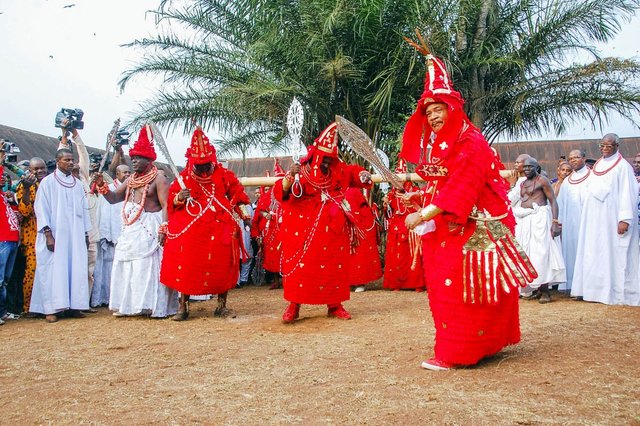
In the music sector, Edo State is blessed with a large coterie of nationally and internationally renowned performers. Sir Victor Uwaifo leads his pack, a multi media artist who was trained at Yaba College of Technology and the University of Benin. He has performed in major cities in the world. In 1995, Sir Uwaifo was invited for a performance at the United Nations Golden Jubilee celebrations.
Others in this category include Sunny Okosun, Peter King, Felix Duke, Osayomore Joseph and many others who have flown the flag of Edo State creditably. Itinerant traditional performers who are mainly hired for burial, naming ceremonies, age-grade festivals and others abound inEdo State. Chief Omobuare, who died in February 2002 at the age of 92 years, was a leading exponent of the traditional Esan music genre called Asologun. His virtuosity on the wooden piano and his philosophical ditties won him fame in Esan land and beyond.
Collins Elaiho, Segun Alile, the late General Bolivia Osigbemhe, Vincent Ugabi, Sir WaziriOshomah, Aibor Bello, Omo Smart Idonijie, Constantinopolous Osigemhe, Benji Igbadumhe, Patrick Idahosa, Omoadoni, Adesua, Queen Orete and scores of others have modernized the rich folklore songs of their people into universally-accepted music forms.
The late Chief Isaac Ayeni and Anco Momodu (Anco Limited) are exponents who are largely regarded as the doyens of the traditional music genre in Edo State.
In Edo State, there is no dance or song that has no satirical connotation or bearing. The songs or dances that have evolved in many communities in the state have socio-cultural backgrounds. The same pattern of call and response mode of singing and the deftchorographical dance steps obtain in all the areas of Edo State.
Most traditional songs are accompanied by heavy beats which the dancers step in tune with. Praise-singing is commonplace among musicians in the state.
The involvement of the youths in the performance of these songs and dances ensures continuity in the traditional heritage of the people from one generation to the other.
FESTIVALS AND MASQUERADES:
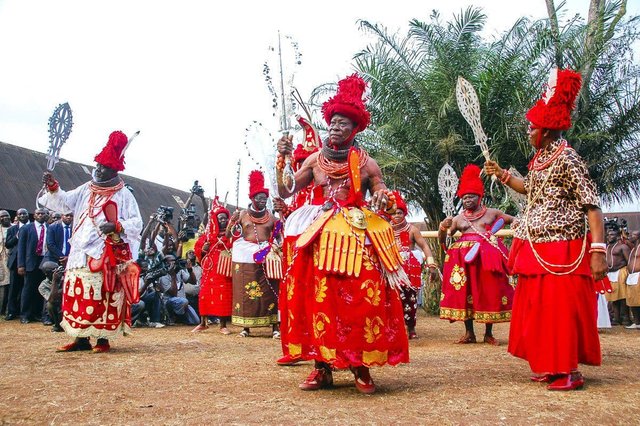
Edo State has a very rich tradition of festivals and masquerades through which the people either appease the various gods and goddesses initiate men and women into age-grades or as a traditional get-together.
The Igue festival takes pre-eminence among festivals celebrated in Edo State. It is celebrated every December each year by the Oba of Benin to usher in the New Year and as a thanksgiving for the outgoing one. The Igue festival attracts tourists from across Nigeria and abroad. Most of the festivals have a yearly cycle and are open to general viewing and sometimes, participation. Some others like the Obazu festival held among the Aomas of luleha in OwanWest Local Government Area is strictly restricted to the men folk.
Other important festivals celebrated in Edo State are Ekaba, Ukpe, Irua, Agiele, Adu-Ikukwua,Ebomisi, Eho, Ipihionua, Ugbele, Itakpo, Ofarhe, Emomorhe, Iko, Uzo, Ugozo/Ihiasa, Uba,Egbere, Owere, Ukpako, Oriminyam, Ohonmoimen, Itikiri, Ivhamen/Ororuen, Amekpe, Oto-Uromi, Ighele and Okpuge-Oro.
The masquerades in Edo State are generally believed to be earthly representatives of some celestial gods, goddesses or ancestors. Masquerades like the Igbabonelimi of Esanland are very popular social entertainers whose secrets and workings are only known to initiates who are sworn to utmost secrecy.
Many masquerades are linked to traditional festivals, while others are only social and have no ritualistic backgrounds.
FOOD:
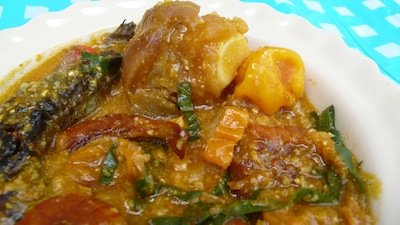
The traditional cuisine in Edo State is fairly representative of what obtains in most southern states in Nigeria. Pounded yam or eba are eaten with vegetable, melon, black soup, Bini Owo soup, Omi Ukpoka(corn soup) or okra soups cooked with either bush meat (Antelope, Pig and Grasscutter etc), beef or fish. Yam and rice, which are grown in the state is also eaten with other varieties of soup and meat or fish throughout the state. Garri, which comes in white or yellow variants can be eaten or soaked in water and accompanied with beans, meat, fish, groundnuts etc.
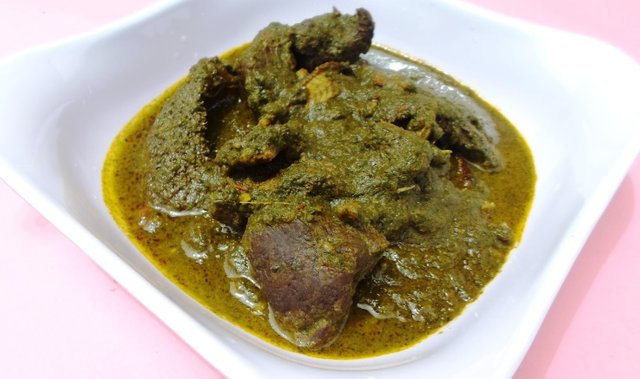
Rice and beans are popular across the state. The people of Edo State also prepare yam orcocoyam porridge in homes and restaurants.
Non-indigenous foods like amala, starch, pepper soup, fufu and banga soup, have lately crept into the local cuisine. This is due to the constant social interaction of the people with large migrant community from other parts of Nigeria.
This is where we draw the curtain for today. More of this in my upcoming post. 💖💖Love y'all 💖💖 and thanks for reading.😉
Image sources:
Source 1
This post was mistagged with #utopian-io